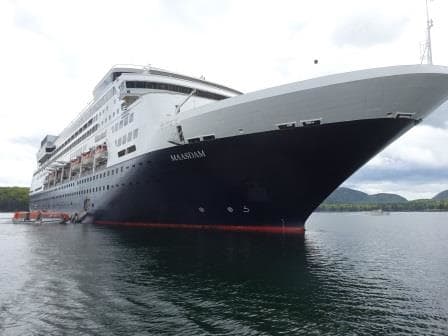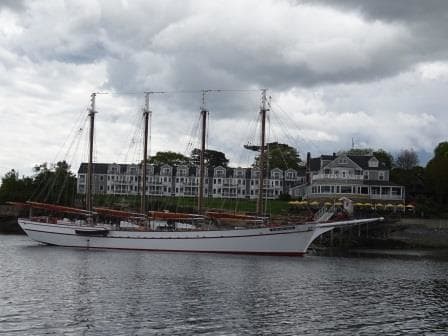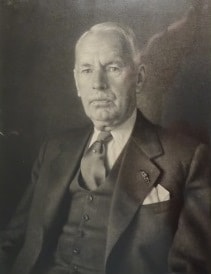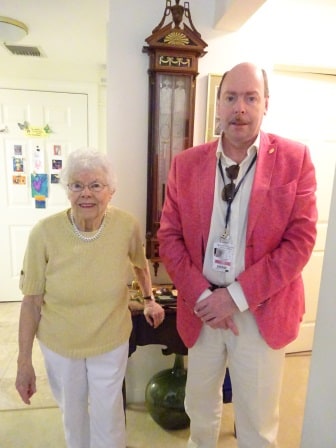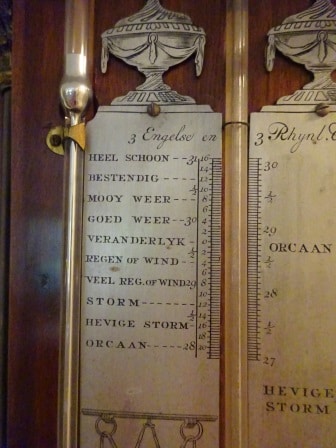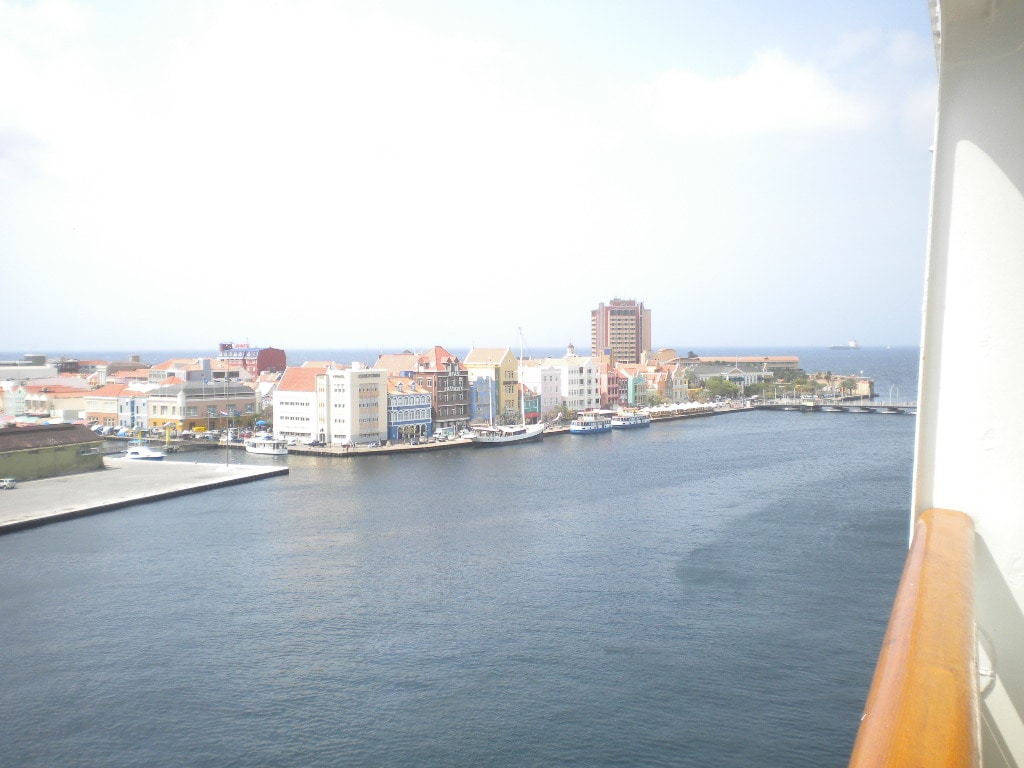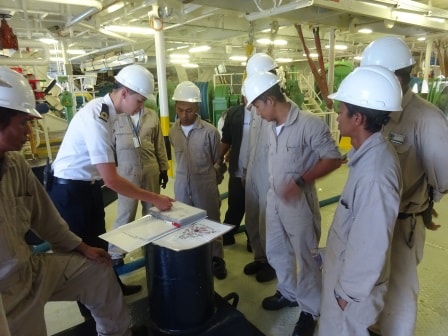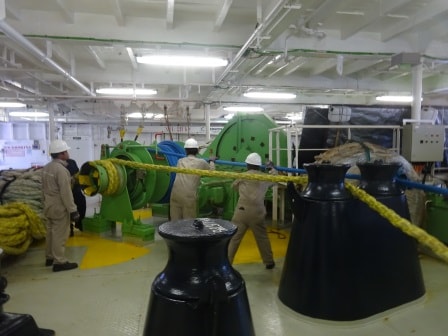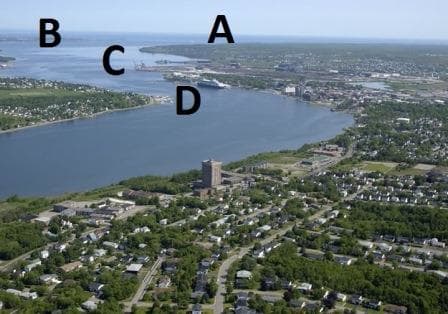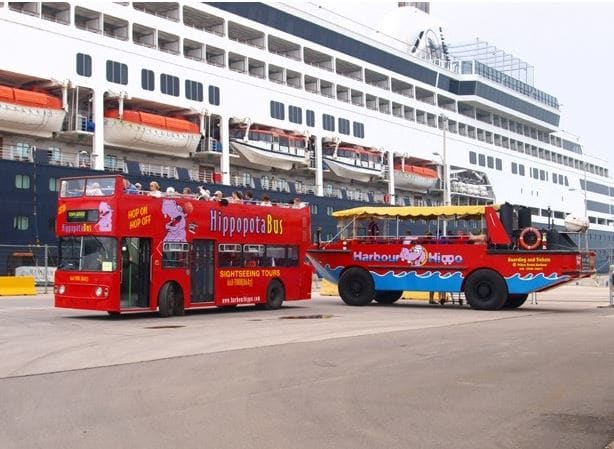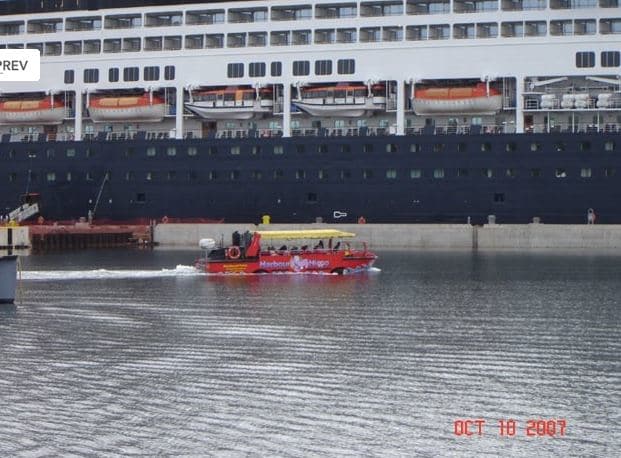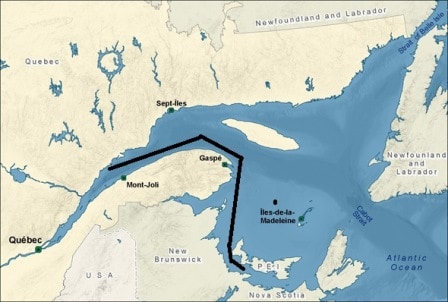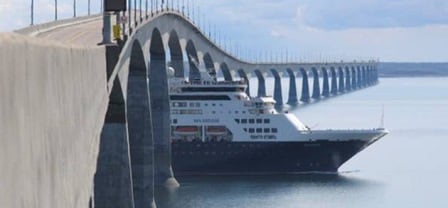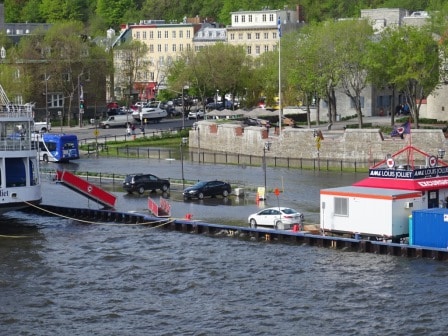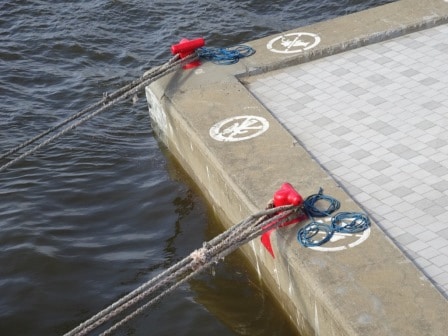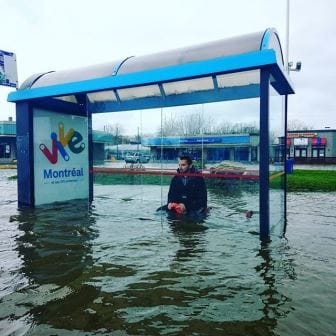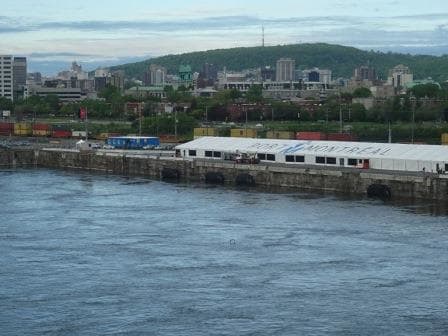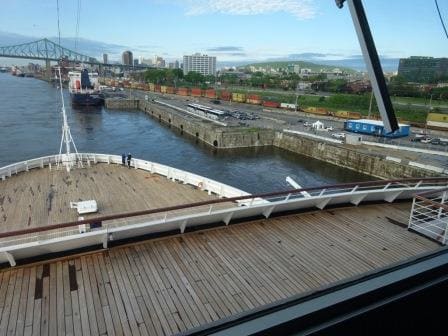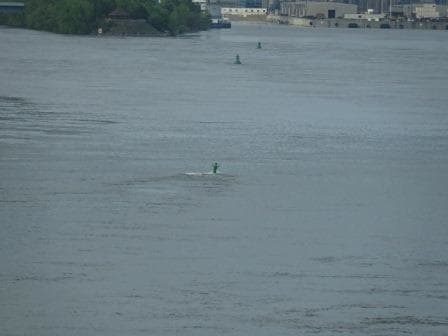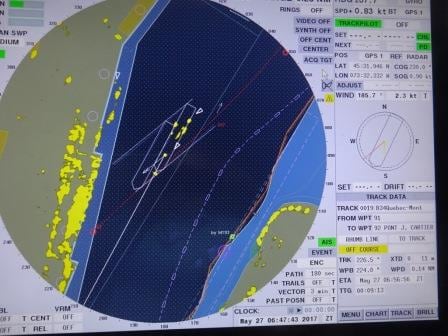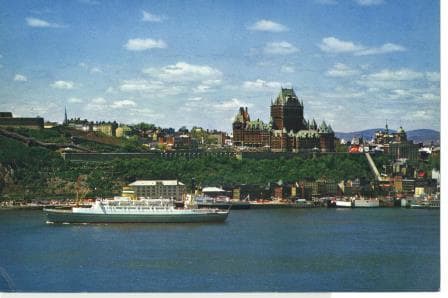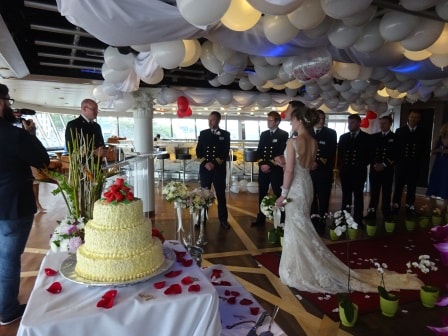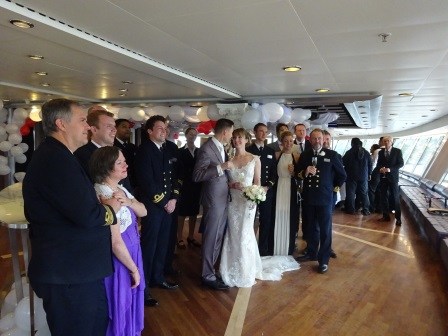We had a light air (wind force 1) when we arrived and that went later down to wind force zero, what we call Calm of Wind. So I was a very happy camper as it was perfect weather to train the 20 dining room stewards in lifeboat handling. So we happily pottered around the ms Maasdam with lifeboat 12 carrying out various maneuvers. When all goes well with the next training, they will all receive an official certificate saying that they are now qualified Lifeboat Handlers.
It was also a special day for me, as this was the first time in 37 years that I set foot ashore in Bar Harbor. The locals were of course suitably impressed and everything came to a grinding halt. ….. Not everything, basically only the cars and they were stopping for the traffic lights. There is a very nice 2nd hand book shop in town, but luckily I went without money and thus I was not tempted.
I was more tempted to sign up as Ice Cream attendant. Labor was sought by means of a sign at the entrance of the boat landing and someone who is advertising on a Vodka sign for ice cream cannot be a bad person. But it shows how much cruise ships add to the economy.

Although the Samantha looks bigger she can only carry 69 guests while a tender can carry a 100 when in tender service.
We were running a tender service as usual, with our ships tenders and with one shore tender the Samantha, which is otherwise used for Lobster fishing tours. I suppose a day of steady income is more worthwhile than waiting for customers to show up or not. I grabbed the chance to go ashore with the Samantha, looked around, and then come back with a ships tender, to see if the operation was in line with all our companies’ standards and requirements. I always find something but it is of course better that I find it than the auditors find it and put a mark against the ship. It is part of my job to minimalize this where possible.
The little coastal cruise ship the Independence of American Cruise Lines was in port again and she is so small that she can dock against the largest pier in the port. There is a larger pier, the ferry dock, but it is no longer in use and its future is rather vague; although one of the options is to convert it into a cruise terminal. In the past a ferry would sail from here to Halifax and thus it has all the immigration facilities already available for a ship coming in from Canada. We were coming from Boston so today so we did not need to be inspected by CBP.
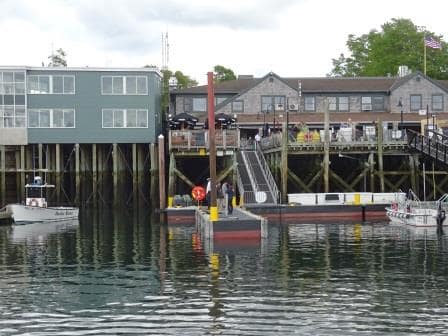
The first view of Bar Harbor when coming into port. The tides can be considerable here and thus the long ramps and floating docks.
Bar Harbor turned out to be a very nice little town and would indeed be perfect if we could dock there. Now the need for tender service takes a little bit of the edge off the whole happening as guests have to wait to go ashore and come back when the tender is ready.
Another ship in port is the schooner called the Margaret Todd. This schooner sails three sightseeing trips a day from Bar Harbor through the bay. She was built in 1998 as a purpose built sightseeing vessel with four masts. Because she was purposely constructed it makes it possible for her to sail with the same speed, whether there is wind or not. Today there was no wind and she still happily sailed around the Bay. Last week there was wind and she happily sailed full speed against it. Having an engine on a real windjammer somewhat takes the edge off things a little bit but it is still a very nice way to get acquainted with a four mast schooner of which there were so many in the old days. I wonder where the name comes from as according to Wikipedia there is a Margaret golfer, a Margaret Scottish writer and doctor and a Margaret American Film actress. (Or maybe it is just the mother in law of the owner……….)
As usual we sailed late from Bar Harbor as the guests without exception all try to get back with the last tender. And as our tenders do not increase in capacity during the day, that does not work and so we always need to make a few tender trips after the deadline of 14.30 hrs. Tonight we will sail under the coast of Nova Scotia and we should be docked by 08.00 tomorrow morning in Halifax. The weather looks good again, slightly chillier then today 13oC / 56oF, but again with little wind and that is what I need to continue with the boat handling classes.
